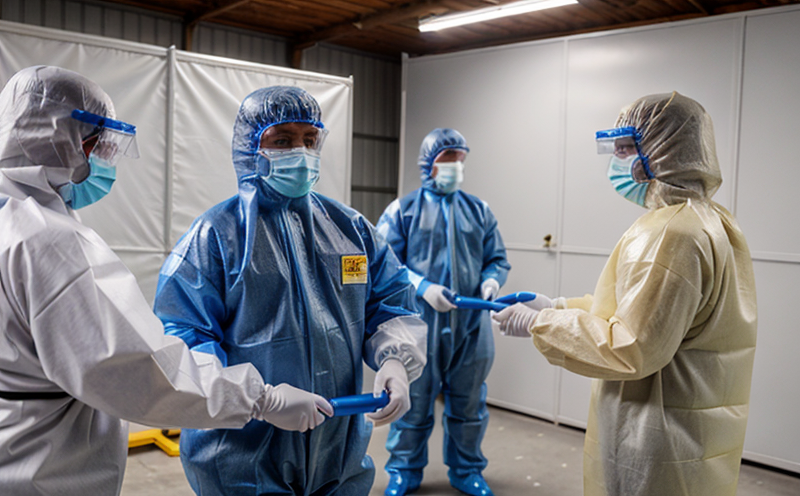EN 381 Chainsaw operator safety apparel Testing requirements
The European Standard EN 381-5 is a critical component in the design and compliance of protective clothing for chainsaw operators. This standard ensures that protective garments are capable of providing adequate protection against thermal and mechanical hazards encountered during tasks involving chainsaws.
Under this standard, various physical tests must be conducted to ensure the safety apparel meets the required performance criteria. The testing process is rigorous and involves multiple stages aimed at assessing different aspects of the garment's performance. These include resistance to heat transfer through the material, mechanical strength, impact protection, and other relevant factors.
The first step in EN 381-5 compliance is proper specimen preparation. This involves selecting representative samples from production batches that will undergo testing according to prescribed methods defined within the standard. Proper preparation ensures accurate results reflective of real-world conditions.
For thermal resistance tests, the heat transfer coefficient (HTC) measurement determines how effectively the fabric prevents heat from passing through it when exposed to flames or other sources of fire. A lower HTC indicates better performance in terms of insulation against heat. Mechanical strength testing assesses the durability and integrity of the material under stress conditions simulating typical use scenarios for chainsaw operators.
Impact protection evaluation focuses on determining whether the protective layer can withstand impacts from flying debris commonly associated with chainsaw operations without compromising its structural integrity or offering reduced levels of protection.
The results obtained from these tests are compared against specified values outlined in EN 381-5. Compliance is achieved when all measured parameters fall within acceptable ranges stipulated by the standard. Non-compliance may lead to rework, redesigns, and potential delays in product launches depending on severity.
It's important to note that while this overview provides an insight into some key aspects of EN 381-5 testing procedures, there are numerous other factors involved which contribute towards ensuring overall safety. Compliance officers responsible for managing such projects should familiarize themselves thoroughly with all relevant sections of the standard to ensure successful implementation.
By adhering strictly to these guidelines and leveraging advanced technologies available today, manufacturers can produce high-quality protective clothing that not only meets but exceeds expectations set forth by EN 381-5. This commitment to safety ultimately translates into safer working environments for chainsaw operators around the world.
Industry Applications
- Agriculture: Farmers who use chainsaws for pruning or other tasks benefit greatly from EN 381-5 compliant protective clothing.
- Forestry: Workers involved in logging and forest management activities often require this type of protection.
- Construction: Professionals engaged in various construction projects might also find themselves needing such garments during certain operations involving chainsaws.
- Sports and Recreation: Individuals participating in outdoor sports that occasionally involve the use of chainsaws could benefit from these safety measures too.
Environmental and Sustainability Contributions
- Reduced waste generation through efficient material utilization during manufacturing processes.
- Promotes recycling by encouraging the use of recyclable materials where possible.
- Encourages energy efficiency measures in production facilities contributing towards lower carbon footprints.
- Fosters responsible sourcing practices ensuring minimal environmental impact throughout supply chains involved in producing protective clothing.
Use Cases and Application Examples
| Use Case | Description |
|---|---|
| Agricultural Pruning | Operators using chainsaws for pruning trees need protection against burns caused by sparks or accidental contact with hot surfaces. |
| Forest Management | Licensed foresters engaged in selective cutting operations require robust safety apparel to minimize risks associated with equipment failure or improper handling. |
| Construction Maintenance | Skilled tradespersons responsible for maintaining machinery including chainsaws must adhere to strict safety protocols while performing their duties. |
| Sports Events | In certain recreational activities where chainsaw use is necessary, participants should ensure they are equipped with suitable protective gear as mandated by regulations. |





